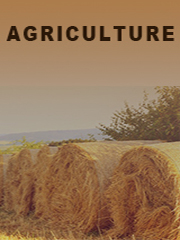Seed treatment involves the use of processes and products for effective integrated pest management (IPM). It is a sustainable agricultural practice as the use of these products and processes targets the diseases and pests with lower dosages of active ingredients per hectare. Farmers struggle in controlling certain early season soil-borne pests and seed-borne diseases when they do not use treated seeds and have to resort to less environment-friendly and more expensive methods.
This report aims to provide a comprehensive presentation of the global market for Seed Treatment, with both quantitative and qualitative analysis, to help readers develop business/growth strategies, assess the market competitive situation, analyze their position in the current marketplace, and make informed business decisions regarding Seed Treatment. This report contains market size and forecasts of Seed Treatment in global, including the following market information:
- Global Seed Treatment Market Revenue, 2018-2023, 2024-2029, ($ millions)
Global top five companies in 2022 (%)
The global Seed Treatment market was valued at US$ 6940.7 million in 2022 and is projected to reach US$ 10320 million by 2029, at a CAGR of 5.8% during the forecast period. The influence of COVID-19 and the Russia-Ukraine War were considered while estimating market sizes.
The American region accounted for the highest adoption of seed treatment in 2017, majorly contributed by countries such as the US, Brazil, and Canada. The high adoption of insecticide seed treatment for corn, soybeans, and canola in these countries are the major reasons for their dominance in the market. Asia Pacific is projected to be the fastest-growing market for seed treatment in agricultural applications from 2018 to 2023. The significant growth in adoption of biologicals strengthened the market potential for local manufacturers to develop better and more efficient products such as biostimulants and biofertilizers.
We surveyed the Seed Treatment companies, and industry experts on this industry, involving the revenue, demand, product type, recent developments and plans, industry trends, drivers, challenges, obstacles, and potential risks.
Total Market by Segment:
Global Seed Treatment Market, by Type, 2018-2023, 2024-2029 ($ millions)
Global Seed Treatment Market Segment Percentages, by Type, 2022 (%)
- Insecticides
- Fungicides
- Nutrients
- Biological Additives
- Others
Global Seed Treatment Market, by Application, 2018-2023, 2024-2029 ($ millions)
Global Seed Treatment Market Segment Percentages, by Application, 2022 (%)
- Corn
- Soybean
- Wheat
- Canola
- Cotton
- Others
Global Seed Treatment Market, By Region and Country, 2018-2023, 2024-2029 ($ Millions)
Global Seed Treatment Market Segment Percentages, By Region and Country, 2022 (%)
- North America
- US
- Canada
- Mexico
- Europe
- Germany
- France
- U.K.
- Italy
- Russia
- Nordic Countries
- Benelux
- Rest of Europe
- Asia
- China
- Japan
- South Korea
- Southeast Asia
- India
- Rest of Asia
- South America
- Brazil
- Argentina
- Rest of South America
- Middle East & Africa
- Turkey
- Israel
- Saudi Arabia
- UAE
- Rest of Middle East & Africa
Competitor Analysis
The report also provides analysis of leading market participants including:
- Key companies Seed Treatment revenues in global market, 2018-2023 (estimated), ($ millions)
- Key companies Seed Treatment revenues share in global market, 2022 (%)
- Further, the report presents profiles of competitors in the market, key players include:
- Bayer
- Syngenta
- BASF
- DowDuPont
- Nufarm
- FMC
- Arysta Lifescience
- UPL
- Incotec
- Germains
- Loveland Products
- Helena Agri-Enterprise LLC
- Rotam
- Adama
- Valent (Sumitomo Chemical)
- Novozymes
- Plant Health Care
- Nanjing Lanscape
- Beijing Bioseen
- Outline of Major Chapters:
- Chapter 1: Introduces the definition of Seed Treatment, market overview.
- Chapter 2: Global Seed Treatment market size in revenue.
- Chapter 3: Detailed analysis of Seed Treatment company competitive landscape, revenue and market share, latest development plan, merger, and acquisition information, etc.
- Chapter 4: Provides the analysis of various market segments by type, covering the market size and development potential of each market segment, to help readers find the blue ocean market in different market segments.
- Chapter 5: Provides the analysis of various market segments by application, covering the market size and development potential of each market segment, to help readers find the blue ocean market in different downstream markets.
- Chapter 6: Sales of Seed Treatment in regional level and country level. It provides a quantitative analysis of the market size and development potential of each region and its main countries and introduces the market development, future development prospects, market space of each country in the world.
- Chapter 7: Provides profiles of key players, introducing the basic situation of the main companies in the market in detail, including product sales, revenue, price, gross margin, product introduction, recent development, etc.
- Chapter 8: The main points and conclusions of the report.
